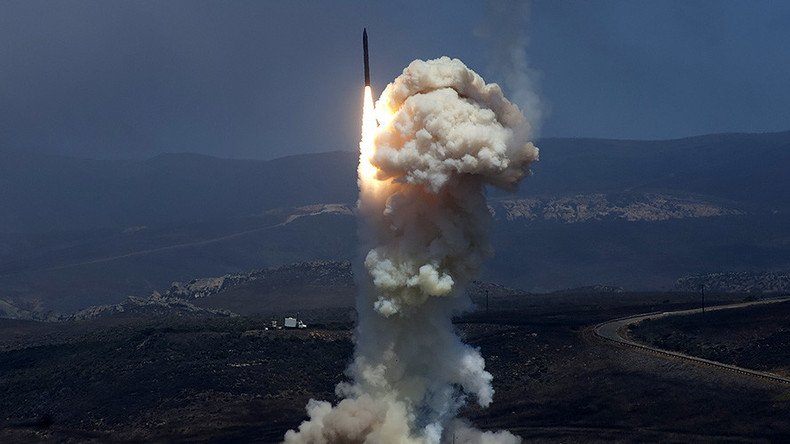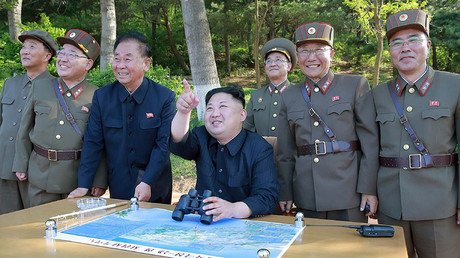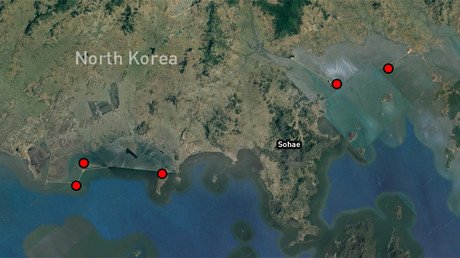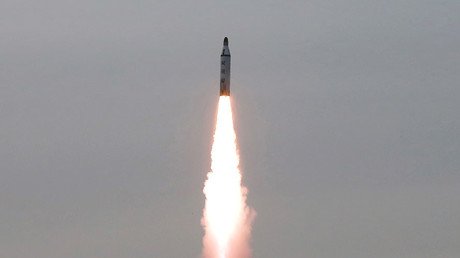Long shot: Pentagon to test ICBM interceptor amid North Korea tensions

As North Korea continues to test ballistic missiles of ever increasing range, the US announced it would attempt the first ever intercept of an intercontinental ballistic missile (ICMB). The test was planned years in advance, according to US officials.
The Ground-based Midcourse Defense (GMD) interceptor will be test-fired next Tuesday from the Vandenberg Air Force Base in California, according to Christopher Johnson, spokesman for the US Missile Defense Agency. The target will be a custom-made missile resembling an ICBM, fired from the Kwajalein Atoll in the Marshall Islands.
“We conduct increasingly complex test scenarios as the program matures and advances,” Johnson said on Friday. “Testing against an ICBM-type threat is the next step in that process.”
#Pentagon to test intercontinental ballistic missile intercept due #NorthKorea threat - News - Stripes https://t.co/VegV4QnGQt
— Bob Reid (@rhreid) May 26, 2017
If the test goes as planned, the interceptor will destroy the target warhead high above the Pacific Ocean, AP reported.
Kwajalein is approximately 8,000 km (4,972 miles) from Los Angeles, California. The Pentagon classifies any missile with a range greater than 3,400 miles as an ICBM.
Tuesday’s test was planned “years in advance” and is not a direct response to recent North Korean tests of ballistic missiles, a Pentagon official who spoke on condition of anonymity told Stars and Stripes.
The last test of Boeing’s GMD system was in June 2014, when it successfully destroyed a target imitating an intermediate-range ballistic missile. It was the first success after three failures and the program has only recorded nine successful intercepts out of 17 total attempts, according to the military newspaper.
“I can’t imagine what they’re going to say if it fails,” Philip Coyle, senior science fellow at the Center for Arms Control and Non-Proliferation, told AP. Coyle headed the Pentagon’s office of operational testing and evaluation between 1994 and 2001. He added that the GDM tests are “scripted for success,” which makes the failure rate “astonishing.”
Deployed in 2004 by the Bush administration, the GMD has never been used it combat. There are currently 32 interceptor missiles in Fort Greely, Alaska and four at Vandenberg. Eight more are supposed to come on-line by the end of this year, AP reported.
While North Korea currently lacks the capability to hit the US mainland, a senior military intelligence official warned that such a development is only a matter of time.
"If left on its current trajectory the regime will ultimately succeed in fielding a nuclear-armed missile capable of threatening the United States homeland," Lieutenant General Vincent Stewart, director of the Defense Intelligence Agency (DIA), told the Senate Armed Services Committee earlier this week.
"While nearly impossible to predict when this capability will be operational, the North Korean regime is committed and is on a pathway where this capability is inevitable," Stewart added.















